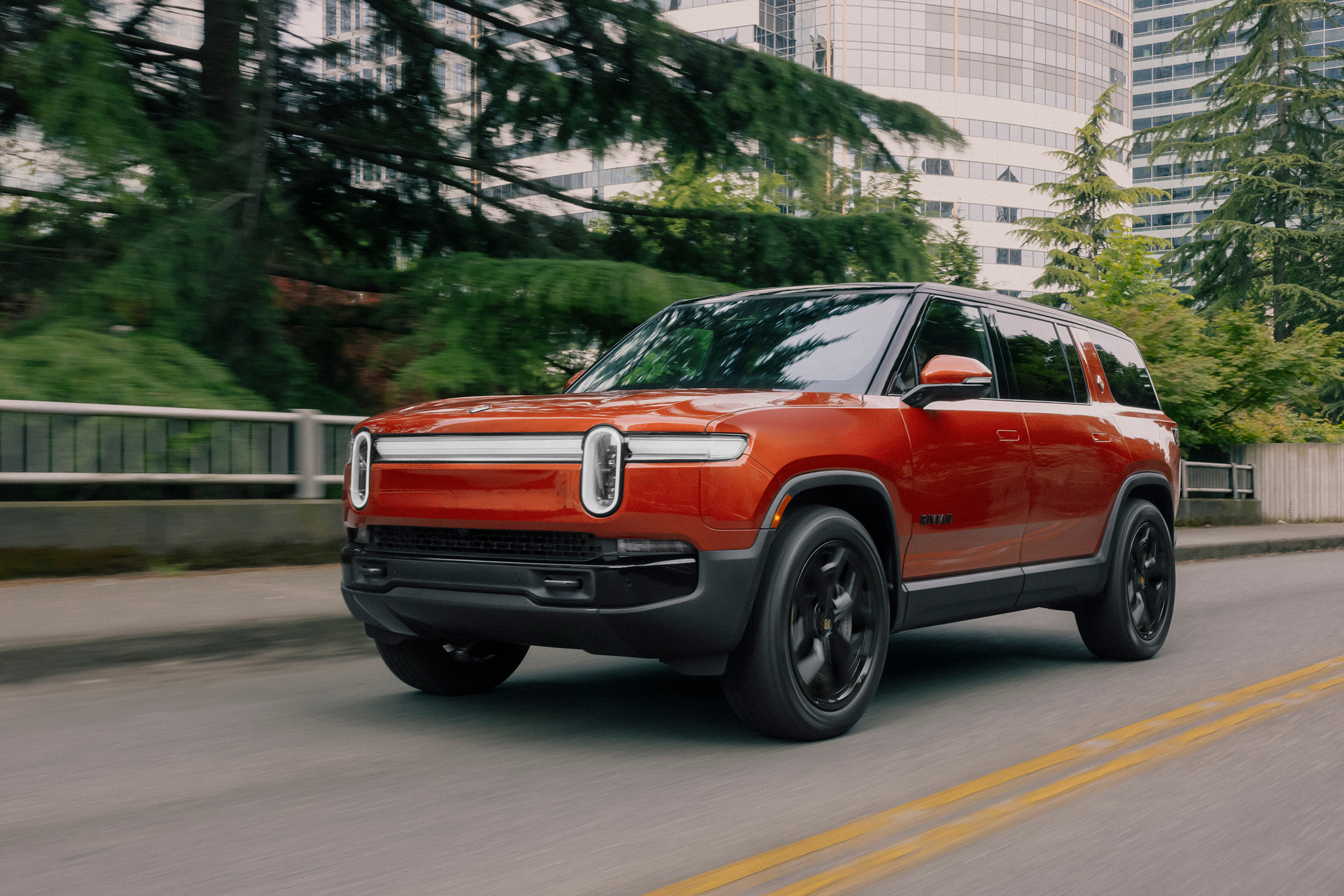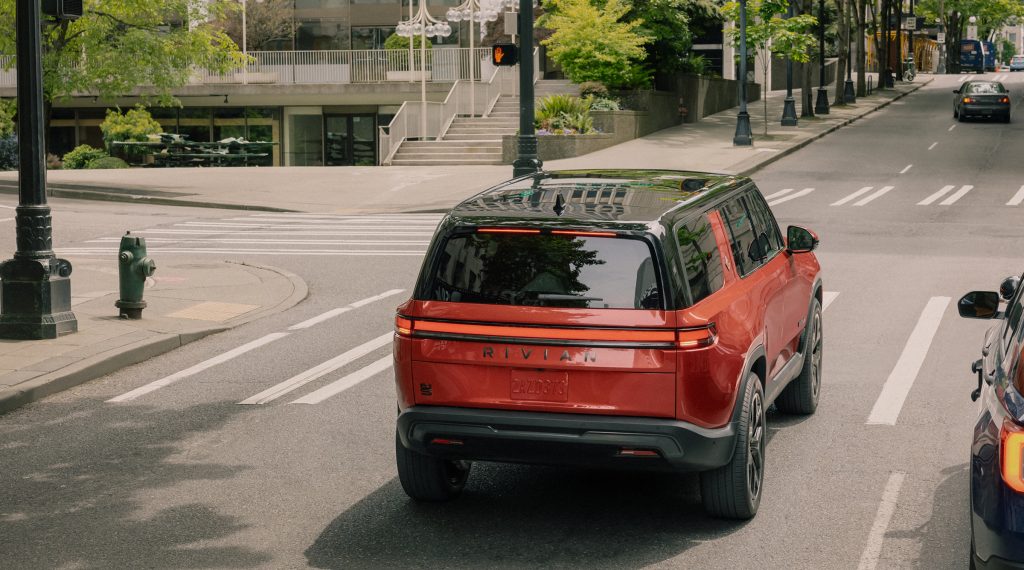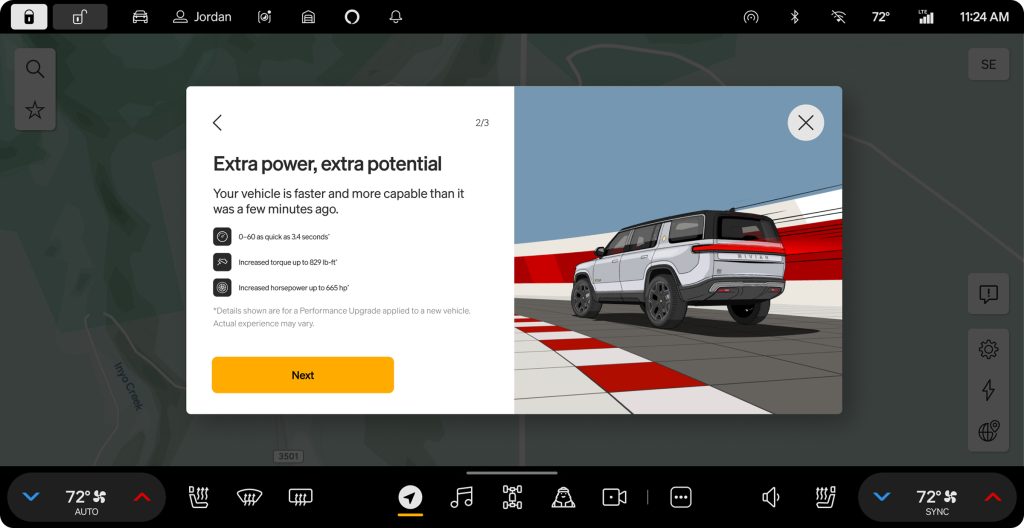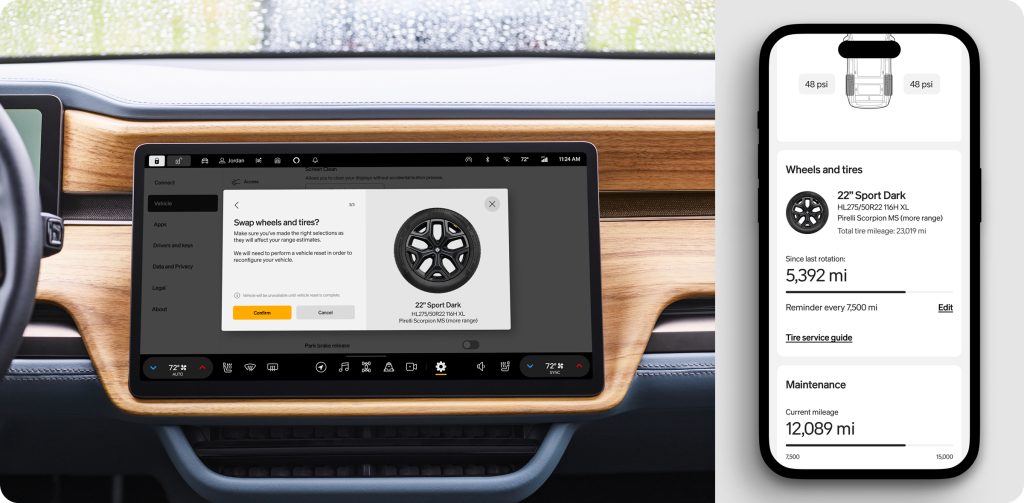News
Rivian launches hands-off driving assist in latest software update
Rivian is finally making its way into the world of automated driving.

Electric vehicle (EV) maker Rivian debuted a new software update this week, and as part of it, the company has started rolling out a hands-off driving assistance system.
Rivian announced the software update in a press release on Tuesday, featuring the newly launched Enhanced Highway Assist for its Gen 2 R1T and R1S, as well as a performance upgrade and a few other improvements. In a separate release, Rivian has also detailed some of the gears behind its approach to autonomy, highlighting that the Enhanced Highway Assist is available for use on as many as 135,000 miles of highway in North America.
Below is a video from CEO RJ Scaringe and VP of Autonomy and AI James Philbin, along with a few more details about the software update and some information from the automaker about the in-house Rivian Autonomy Platform.

Credit: Rivian
READ MORE ON RIVIAN: Rivian’s $6.6B federal loan for its Georgia Plant is in limbo
Enhanced Highway Assist for Gen 2 vehicles
The company’s latest software update is deploying the new Enhanced Highway Assist to Gen 2 vehicles, which will let drivers take their hands off the wheel for extended periods of time, not unlike Tesla’s Supervised Full Self-Driving (FSD). For the time being, the feature is being offered to owners for free, though it’s not clear if Rivian plans to eventually start charging for the suite.
Enhanced Highway Assist is able to control the vehicles’ steering, acceleration, and braking, and Rivian also uses an infrared cabin camera embedded in the interior rearview mirror to monitor driver attention.
Rivian Autonomy Platform
In the press release dedicated to its autonomy program, Rivian notes that its vehicles include a multimodal suite of 11 cameras and five radars, offering sensor redundancy and a 360-degree view. The company also says that its internally developed cameras have the highest resolution of any vehicle in North America, while its radar systems are intended to help detect objects over longer distances and in low-visibility conditions.
“We are excited to continue releasing new updates and dramatically expanding our autonomy features,” Philbin said. “Everything on our Gen 2 roadmap is capable with the hardware on our vehicles today.”
Rivian says its vehicles also include an on-board compute module that’s capable of more than 200 trillion operations per second, while the company’s machine learning models are trained on the latest ML research and transformer architectures.
Performance Upgrade for Dual-Motor (Gen 1 and Gen 2)
Rivian has also debuted a $5,000 Performance Upgrade for Gen 1 and Gen 2 vehicles with the Standard+, Large and Max battery packs, unlocking 665 horsepower and 829 lb.-ft. of torque. The upgrade also adds three new drive modes, dubbed Sport, Rally, and Soft Sand, to the currently available All-Purpose, All-Terrain, and Snow modes.
Owners can purchase the upgrade from the Rivian mobile app or account page, and it will be downloaded to the vehicle through an over-the-air (OTA) software update.

Credit: Rivian
Rally Mode comes to Performance Dual-Motor vehicles
The update also adds Rally Mode to Performance Dual-Motor vehicles, offering heightened throttle response, crisper steering on just about any terrain. To use the feature, drivers will simply need to switch into Off-Road mode, which will let them select Rally Mode.
Wheel Swap
Owners will now be able to change the vehicles’ wheel type in the settings menu, offering improved range estimates.

Credit: Rivian
Go Chime
Rivian has added an audible chime for when a stopped vehicle ahead starts moving, signaling to the driver that they can start driving too. The chime will first be added to the EV maker’s Gen 2 models, before later rolling out to Gen 1.
Side Mirror Auto-Tilt on Reverse
When drivers shift into reverse, Rivian’s sideview mirrors will now automatically tilt downward to show the curb and road, making parallel parking easier. This feature will also go out to both Gen 1 and Gen 2 vehicles.
Control Chargeport Door from Mobile App
Drivers will now be able to control their charging port door remotely using the mobile app, adding an extra layer of protection for those who walk away without closing it manually.
Tire Puncture Detection
Rivian has added proactive detection for tire punctures and slow leaks, set to notify drivers of a potential flat tire before it happens.
Rivian teams up with Ben & Jerry’s on an electric ice cream truck

News
Tesla FSD fleet is nearing 7 billion total miles, including 2.5 billion city miles
As can be seen on Tesla’s official FSD webpage, vehicles equipped with the system have now navigated over 6.99 billion miles.

Tesla’s Full Self-Driving (Supervised) fleet is closing in on almost 7 billion total miles driven, as per data posted by the company on its official FSD webpage.
These figures hint at the massive scale of data fueling Tesla’s rapid FSD improvements, which have been quite notable as of late.
FSD mileage milestones
As can be seen on Tesla’s official FSD webpage, vehicles equipped with the system have now navigated over 6.99 billion miles. Tesla owner and avid FSD tester Whole Mars Catalog also shared a screenshot indicating that from the nearly 7 billion miles traveled by the FSD fleet, more than 2.5 billion miles were driven inside cities.
City miles are particularly valuable for complex urban scenarios like unprotected turns, pedestrian interactions, and traffic lights. This is also the difference-maker for FSD, as only complex solutions, such as Waymo’s self-driving taxis, operate similarly on inner-city streets. And even then, incidents such as the San Francisco blackouts have proven challenging for sensor-rich vehicles like Waymos.
Tesla’s data edge
Tesla has a number of advantages in the autonomous vehicle sector, one of which is the size of its fleet and the number of vehicles training FSD on real-world roads. Tesla’s nearly 7 billion FSD miles then allow the company to roll out updates that make its vehicles behave like they are being driven by experienced drivers, even if they are operating on their own.
So notable are Tesla’s improvements to FSD that NVIDIA Director of Robotics Jim Fan, after experiencing FSD v14, noted that the system is the first AI that passes what he described as a “Physical Turing Test.”
“Despite knowing exactly how robot learning works, I still find it magical watching the steering wheel turn by itself. First it feels surreal, next it becomes routine. Then, like the smartphone, taking it away actively hurts. This is how humanity gets rewired and glued to god-like technologies,” Fan wrote in a post on X.
News
Tesla starts showing how FSD will change lives in Europe
Local officials tested the system on narrow country roads and were impressed by FSD’s smooth, human-like driving, with some calling the service a game-changer for everyday life in areas that are far from urban centers.

Tesla has launched Europe’s first public shuttle service using Full Self-Driving (Supervised) in the rural Eifelkreis Bitburg-Prüm region of Germany, demonstrating how the technology can restore independence and mobility for people who struggle with limited transport options.
Local officials tested the system on narrow country roads and were impressed by FSD’s smooth, human-like driving, with some calling the service a game-changer for everyday life in areas that are far from urban centers.
Officials see real impact on rural residents
Arzfeld Mayor Johannes Kuhl and District Administrator Andreas Kruppert personally tested the Tesla shuttle service. This allowed them to see just how well FSD navigated winding lanes and rural roads confidently. Kruppert said, “Autonomous driving sounds like science fiction to many, but we simply see here that it works totally well in rural regions too.” Kuhl, for his part, also noted that FSD “feels like a very experienced driver.”
The pilot complements the area’s “Citizen Bus” program, which provides on-demand rides for elderly residents who can no longer drive themselves. Tesla Europe shared a video of a demonstration of the service, highlighting how FSD gives people their freedom back, even in places where public transport is not as prevalent.
What the Ministry for Economic Affairs and Transport says
Rhineland-Palatinate’s Minister Daniela Schmitt supported the project, praising the collaboration that made this “first of its kind in Europe” possible. As per the ministry, the rural rollout for the service shows FSD’s potential beyond major cities, and it delivers tangible benefits like grocery runs, doctor visits, and social connections for isolated residents.
“Reliable and flexible mobility is especially vital in rural areas. With the launch of a shuttle service using self-driving vehicles (FSD supervised) by Tesla in the Eifelkreis Bitburg-Prüm, an innovative pilot project is now getting underway that complements local community bus services. It is the first project of its kind in Europe.
“The result is a real gain for rural mobility: greater accessibility, more flexibility and tangible benefits for everyday life. A strong signal for innovation, cooperation and future-oriented mobility beyond urban centers,” the ministry wrote in a LinkedIn post.
News
Tesla China quietly posts Robotaxi-related job listing
Tesla China is currently seeking a Low Voltage Electrical Engineer to work on circuit board design for the company’s autonomous vehicles.

Tesla has posted a new job listing in Shanghai explicitly tied to its Robotaxi program, fueling speculation that the company is preparing to launch its dedicated autonomous ride-hailing service in China.
As noted in the listing, Tesla China is currently seeking a Low Voltage Electrical Engineer to work on circuit board design for the company’s autonomous vehicles.
Robotaxi-specific role
The listing, which was shared on social media platform X by industry watcher @tslaming, suggested that Tesla China is looking to fill the role urgently. The job listing itself specifically mentions that the person hired for the role will be working on the Low Voltage Hardware team, which would design the circuit boards that would serve as the nervous system of the Robotaxi.
Key tasks for the role, as indicated in the job listing, include collaboration with PCB layout, firmware, mechanical, program management, and validation teams, among other responsibilities. The role is based in Shanghai.
China Robotaxi launch
China represents a massive potential market for robotaxis, with its dense urban centers and supportive policies in select cities. Tesla has limited permission to roll out FSD in the country, though despite this, its vehicles have been hailed as among the best in the market when it comes to autonomous features. So far, at least, it appears that China supports Tesla’s FSD and Robotaxi rollout.
This was hinted at in November, when Tesla brought the Cybercab to the 8th China International Import Expo (CIIE) in Shanghai, marking the first time that the autonomous two-seater was brought to the Asia-Pacific region. The vehicle, despite not having a release date in China, received a significant amount of interest among the event’s attendees.








